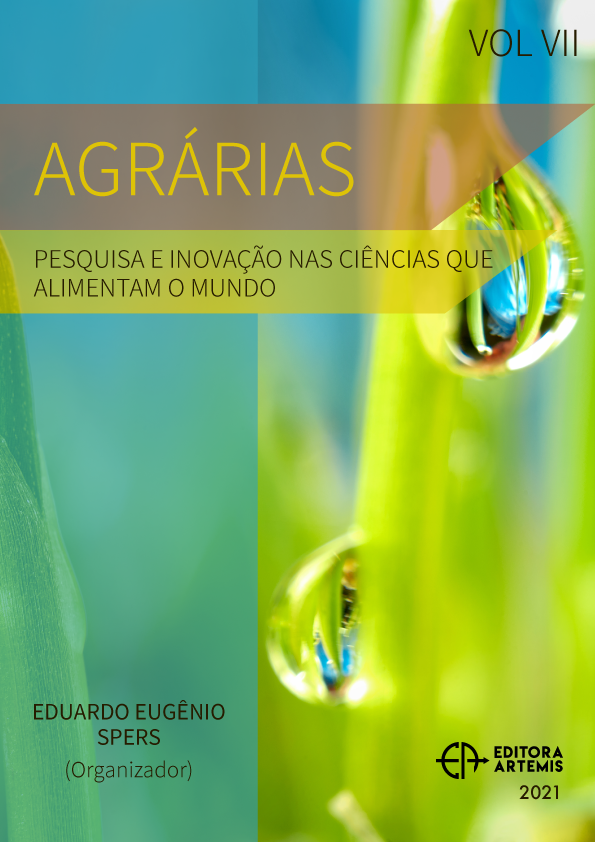
BALANÇO HIDROLÓGICO E TRANSPORTE DE AGROQUÍMICOS PARA A BACIA HIDROGRÁFICA DA LAGOA DAS FURNAS, S. MIGUEL AÇORES
O comportamento hidrológico duma região é de extrema importância quando se pretende conhecer o estado dos recursos hídricos superficiais duma determinada bacia hidrográfica. A bacia hidrográfica da “Lagoa das Furnas”, S. Miguel Açores, tem uma área total de drenagem de 1028 hm2, parte desta área é ocupada com solos de pastagem permanente com pastoreio e aplicação de fertilizantes, que origina escoamento superficial com contaminantes para a lagoa. A redução da carga de agroquímicos que aflui à Lagoa das Furnas foi implementada com a florestação de áreas ocupadas com pastagens e a construção em dezembro de 2017 de um canal de drenagem para desvio de parte da área ocupada com pastagem permanente, reduzindo a área de drenagem para a lagoa das Furnas em 221,27 hm2. Este trabalho insidio na sub-bacia do “Salto da Inglesa”, que representava 30% da área total, ficando depois reduzida a 10% da área total da bacia hidrográfica da Lagoa das Furnas depois da abertura do canal de drenagem.
Os resultados revelam um aumento da percentagem de solos saturados dentro da bacia após a abertura do canal de drenagem, onde a capacidade de infiltração se encontra limitada, tendo como consequência um aumento do coeficiente de escoamento de 0,20 para 0,49. No entanto a quantidade de escoamento superficial drenado na sub-bacia do “Salto da Inglesa” teve uma redução de 42% após a abertura do canal de drenagem, com 275 kg hm-2 de sedimento transportado anualmente. A concentração média de nitrato na água de escoamento superficial diminuiu após a abertura do canal de 6,56 mg L-1 a 0,62 mg L-1. O fósforo solúvel apresenta uma grande variabilidade temporal, com uma diminuição do total exportado da sub-bacia do “Salto da Inglesa”, de 87 kg ano-1 para 68 kg ano-1 após a abertura do canal de drenagem.
BALANÇO HIDROLÓGICO E TRANSPORTE DE AGROQUÍMICOS PARA A BACIA HIDROGRÁFICA DA LAGOA DAS FURNAS, S. MIGUEL AÇORES
-
DOI: 10.37572/EdArt_18122151412
-
Palavras-chave: balanço hidrológico, bacia hidrográfica, agroquímicos
-
Keywords: hydrological balance, watershed, agrochemicals transport
-
Abstract:
The hydrological behavior of a region is of utmost importance when is required to know the situation of surface water resources in a hydrographic basin. The drainage basin of “Furnas Lake” in “San Miguel Azores” island, has a total drainage area of 1028 hm2, part of this area is occupied by permanent pasture soils with grazing and fertilizer application, which originates surface runoff with contaminants into the lake. The reduction of the agrochemical loads that flows into “Furnas Lake” was implemented with the afforestation of areas occupied with pasture and the construction, in December 2017, of a drainage channel to divert part of the area occupied with permanent pasture, reducing the drainage area to Furnas Lake by 221,27 hm2. This work focuses on “Salto da Inglesa” sub-basin, which represented 30% of the total area, being then reduced to 10% of the total area of the “Lagoa das Furnas” watershed after the opening of the drainage channel.
The results reveal an increase in the percentage of saturated soils after the drainage channel opening, where the infiltration capacity is limited, having consequently an increase in the run-off coefficient from 0,20 to 0,49. However, the quantity of drained superficial runoff in the “Salto da Inglesa” sub-basin had a reduction of 42% after the drainage canal opening, with 275 kg hm-2 of sediment transported annually. The average nitrate concentration in the surface runoff water decreased after the drainage canal opening from 6,56 mg L-1 to 0,62 mg L-1. Soluble phosphorus shows a great temporal variability, with a decrease in the total exported from the “Salto da Inglesa” sub-basin, from 87 kg year-1 to 68 kg year-1 after the opening of the drainage canal.
-
Número de páginas: 15
- José Carlos Goulart Fontes
- Juan Carlos Santamarta Cerezal

